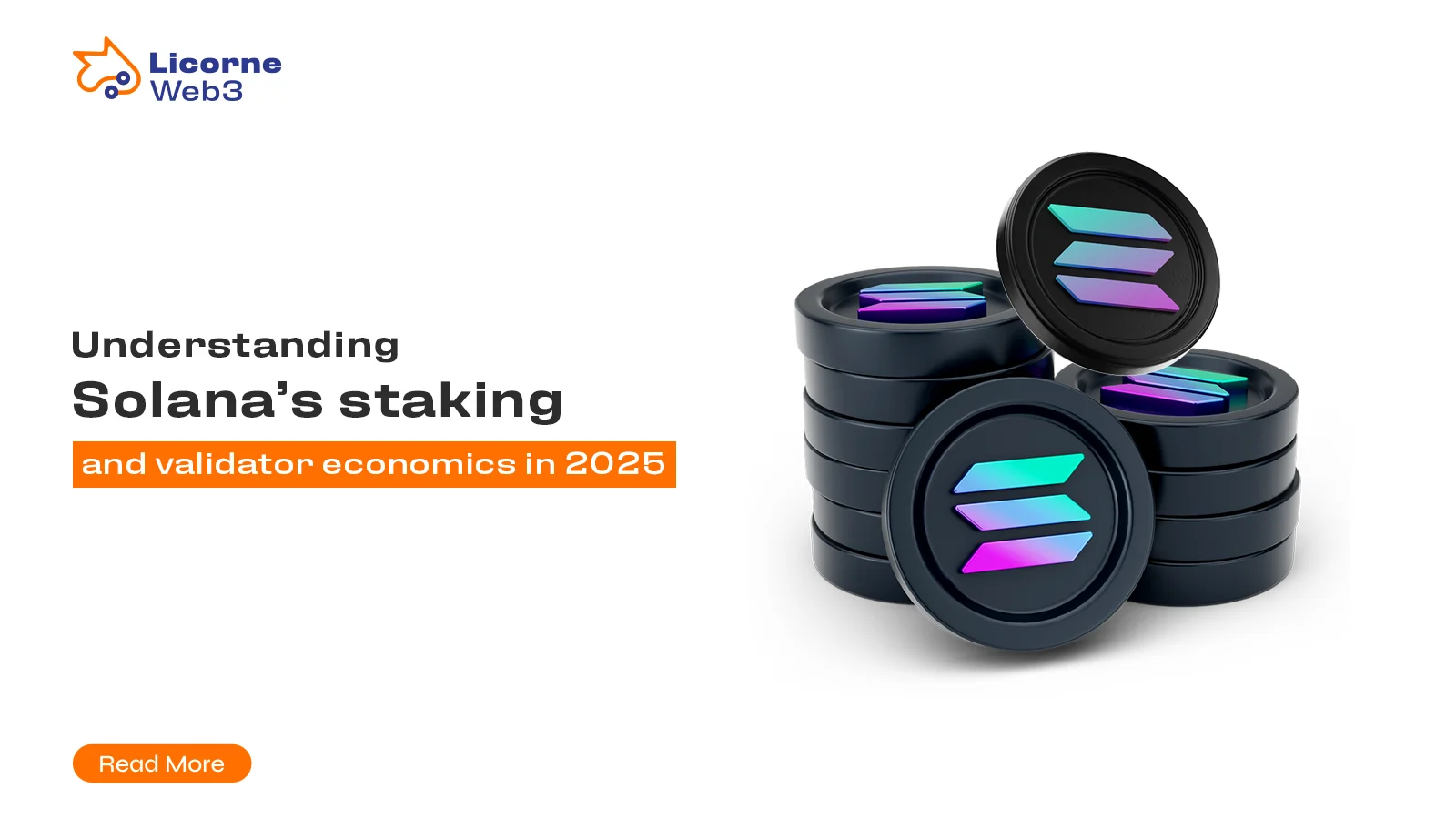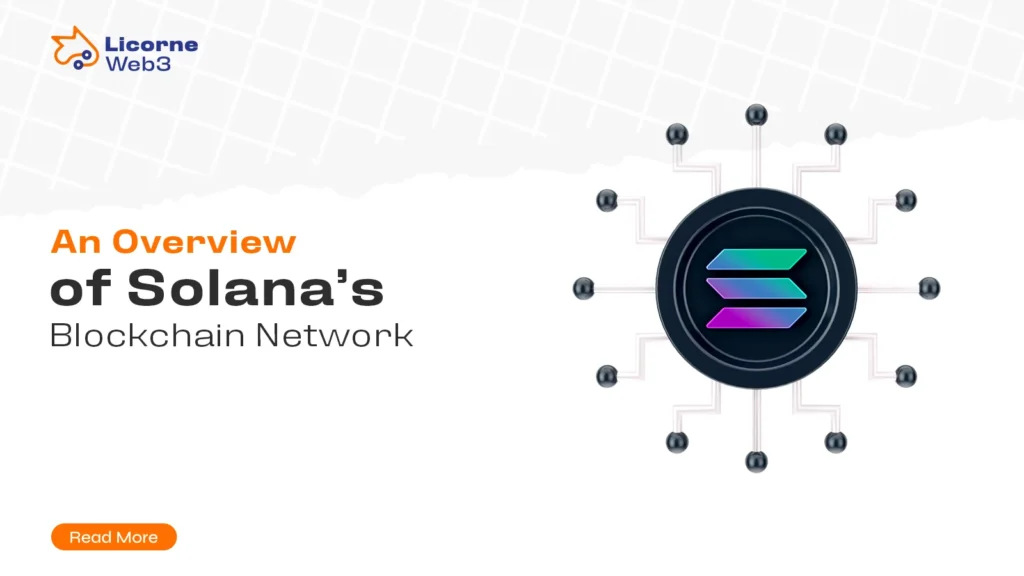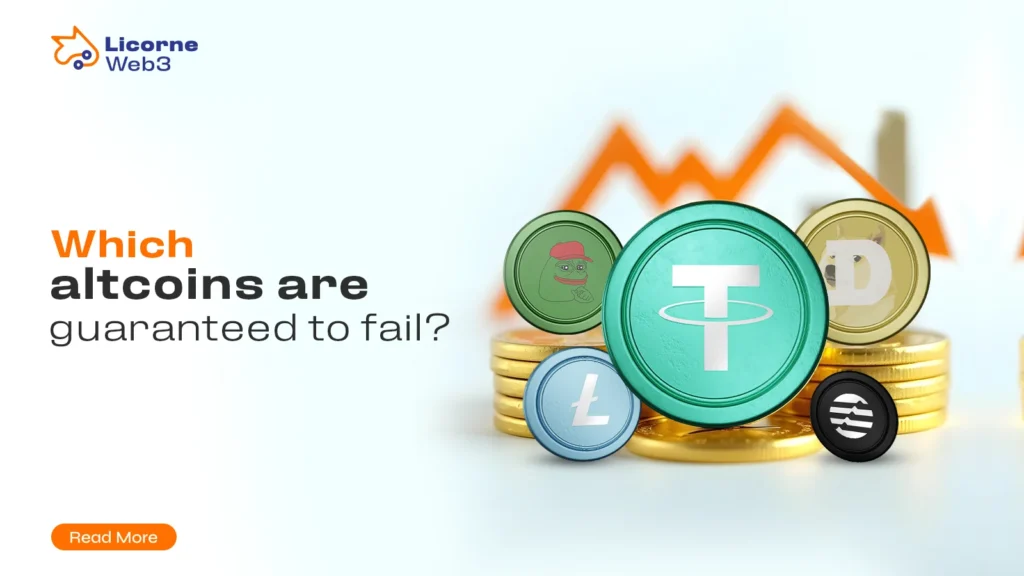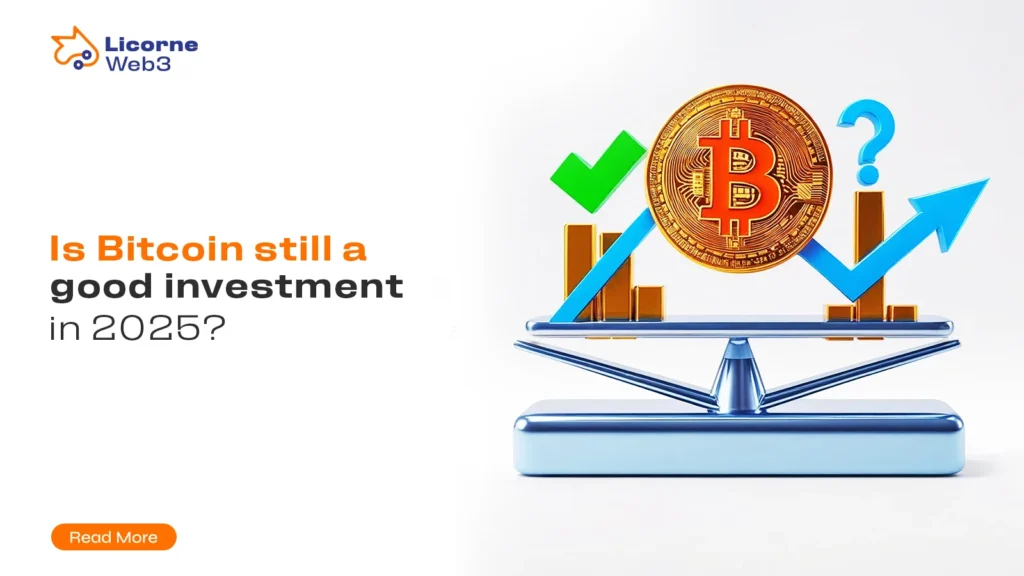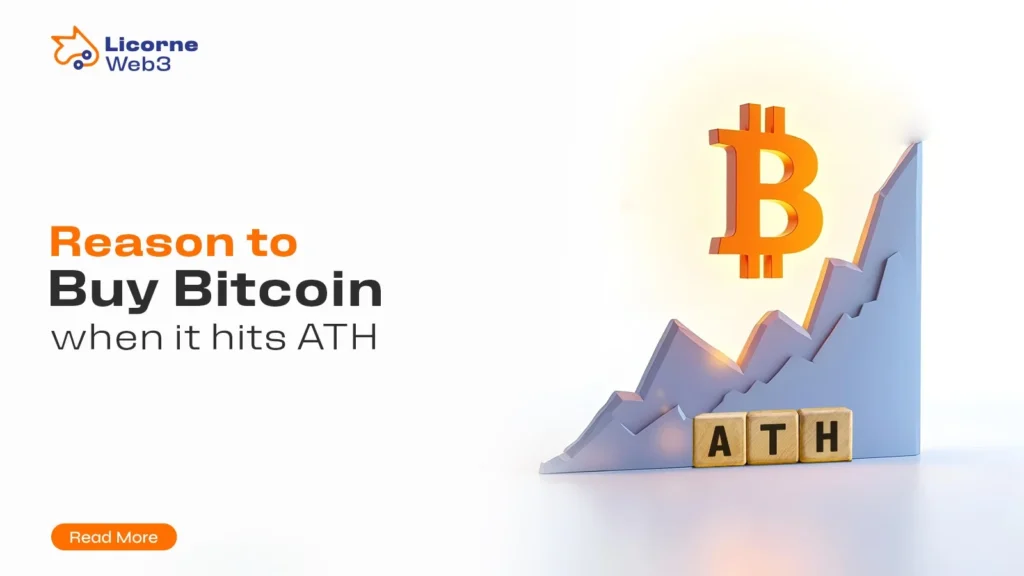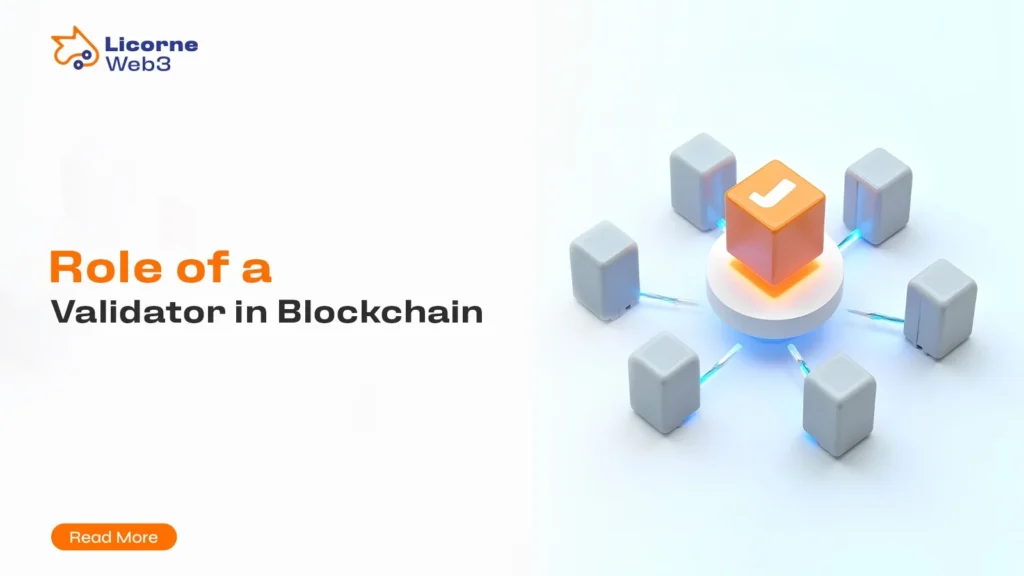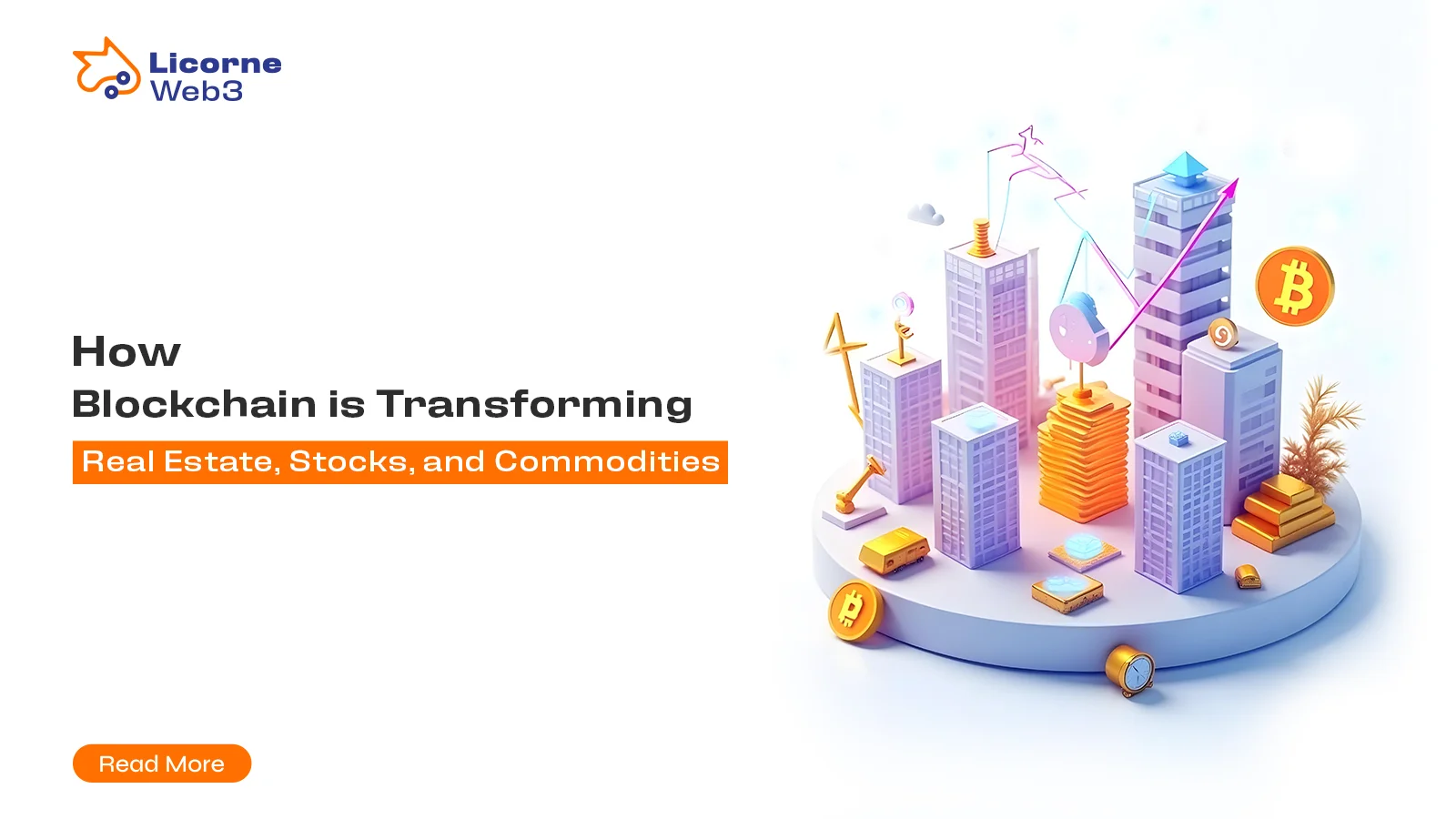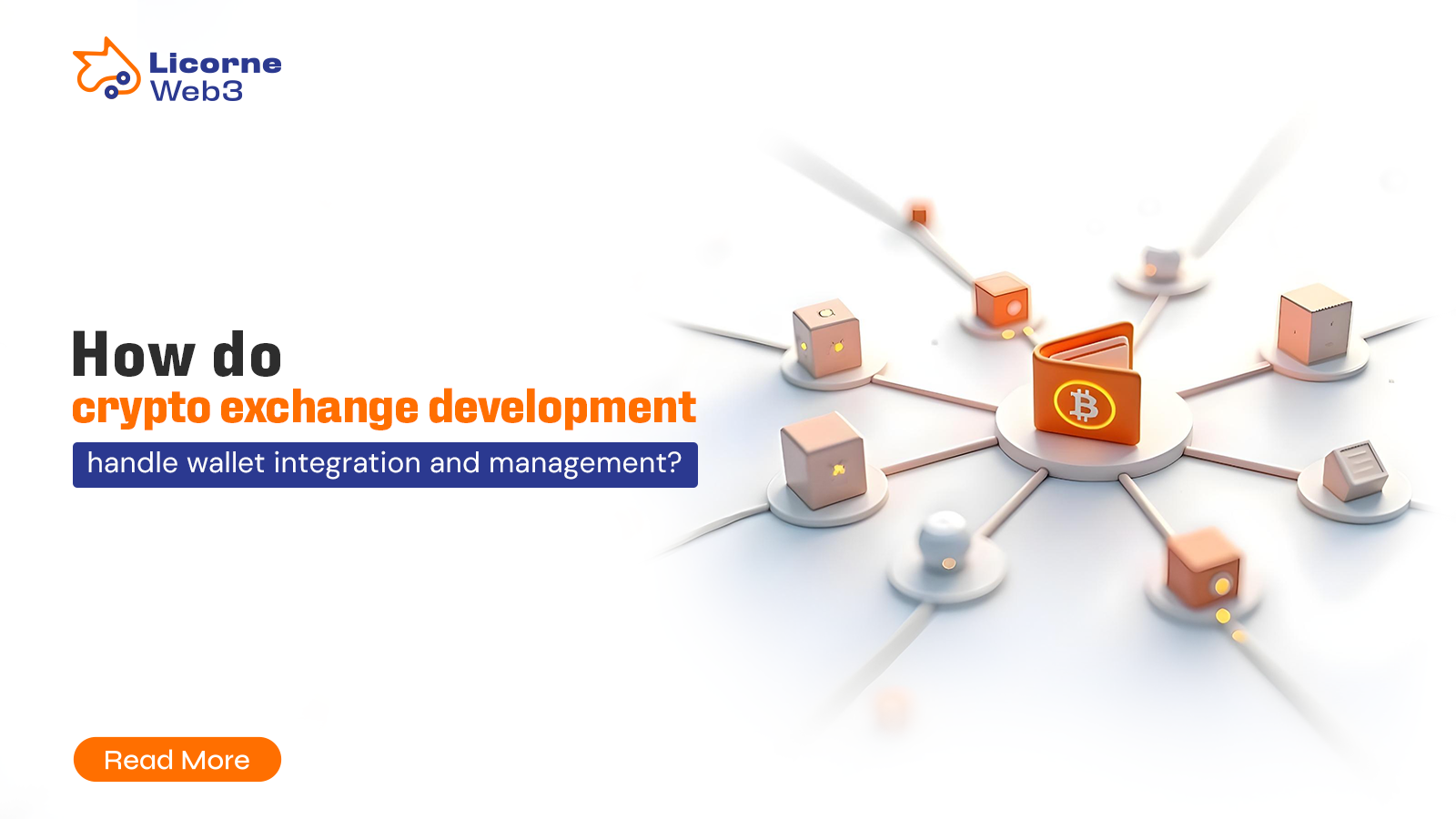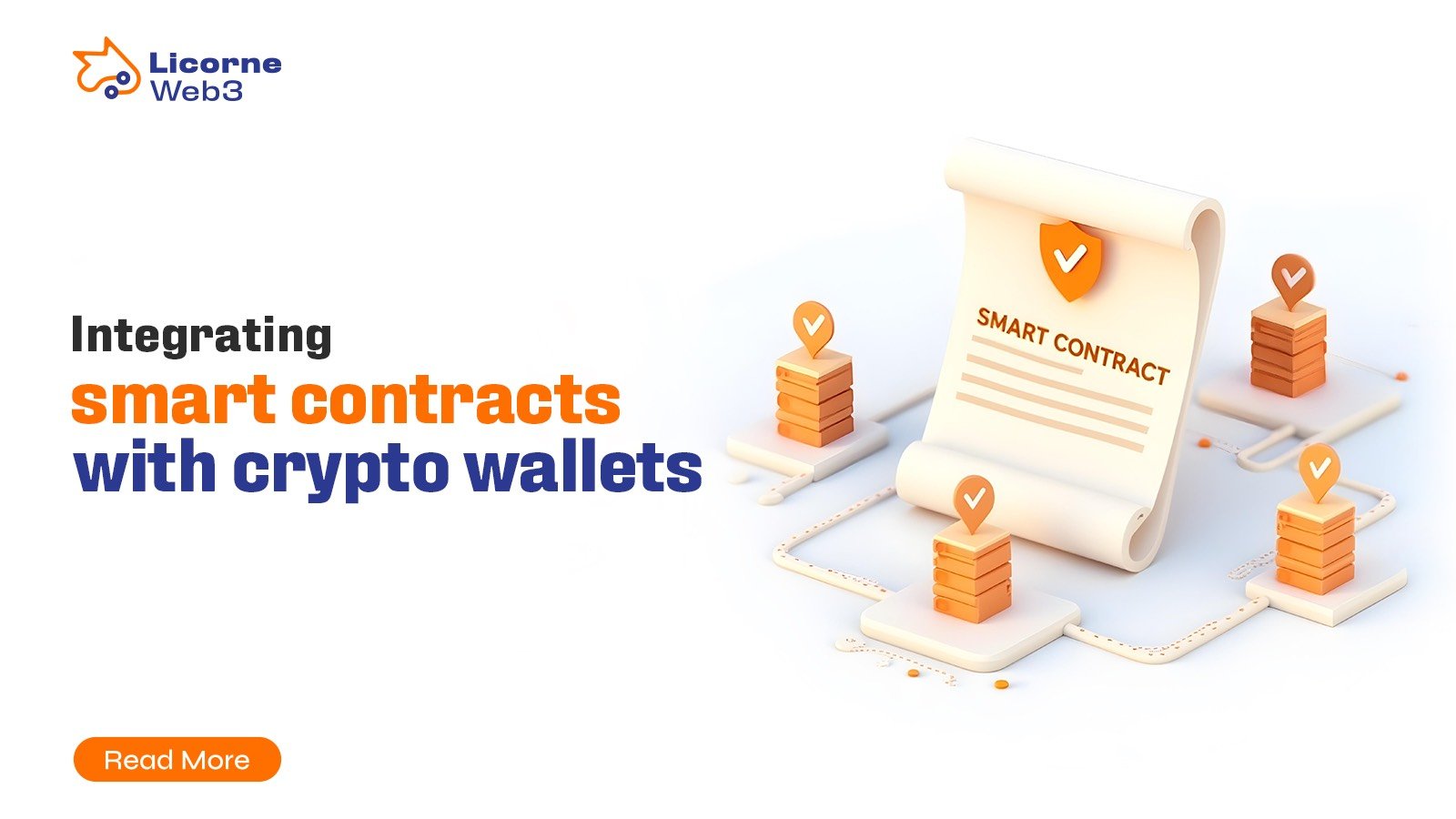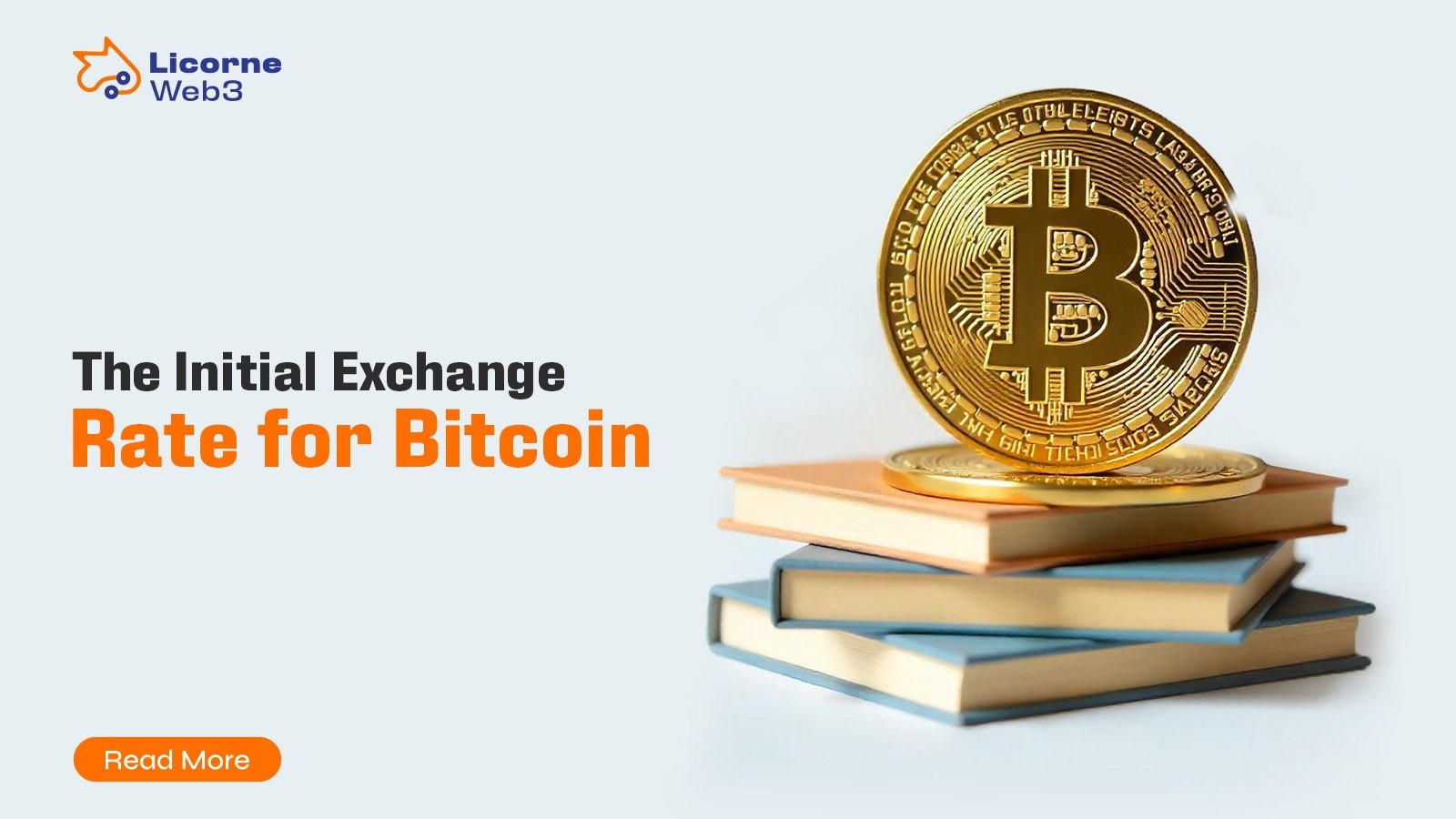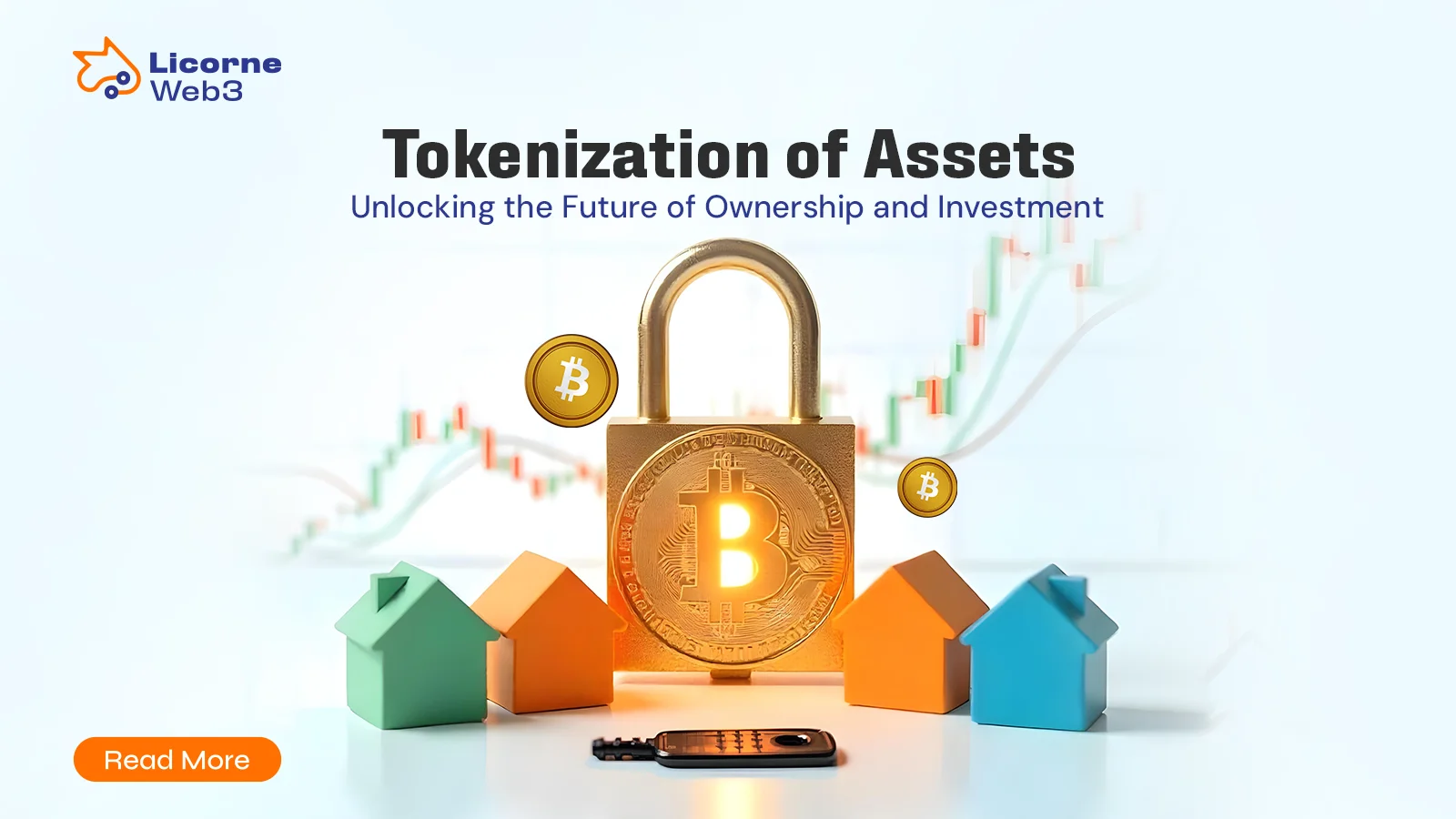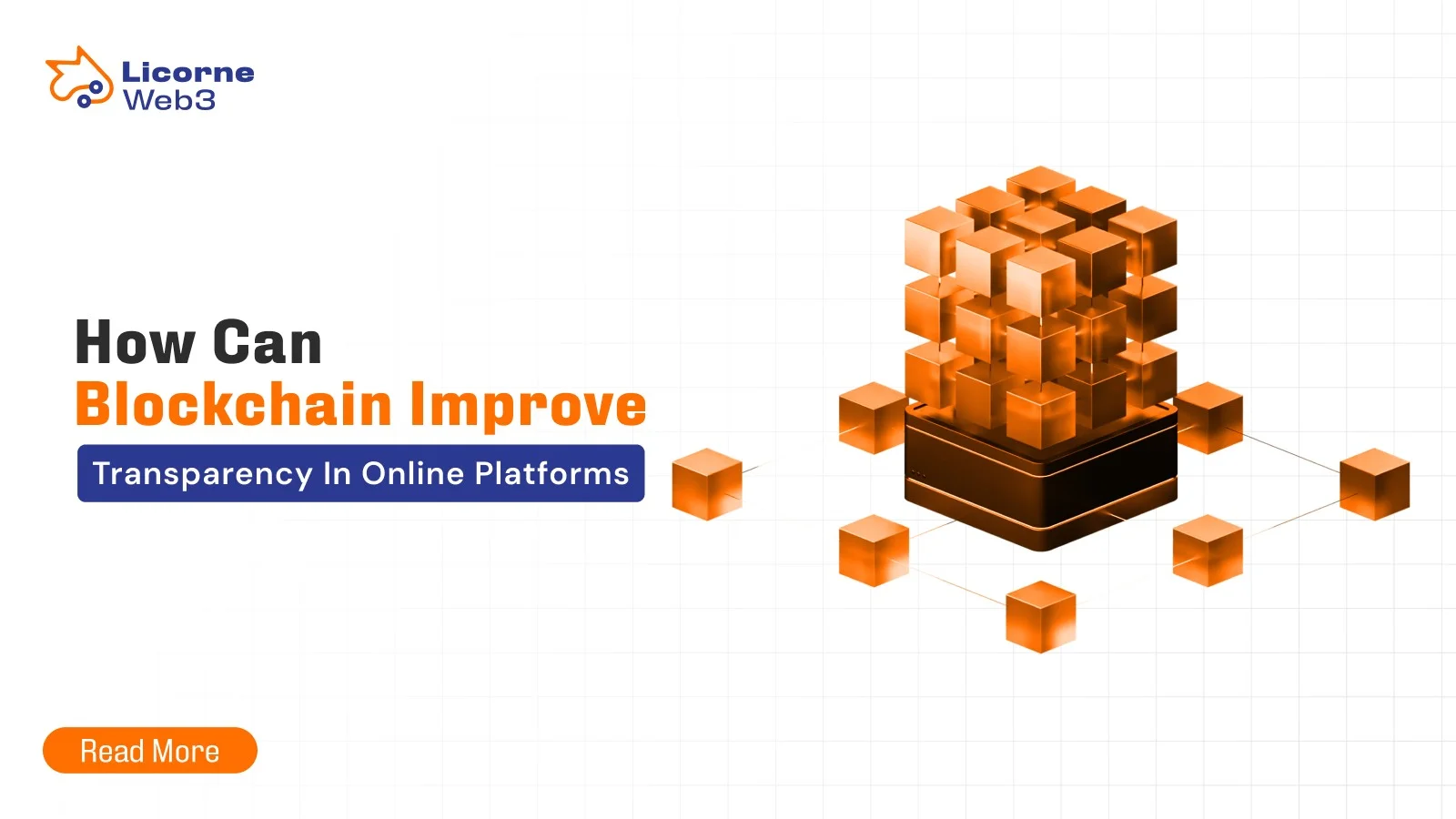Solana has emerged as one of the most scalable and high-performance blockchain networks, known for its fast transaction speeds and low fees. Solana’s security and decentralization is a critical component of its proof-of-stake (PoS) consensus mechanism, which relies on stakers and validators to maintain the network.
As we move into 2025, Solana’s staking and validator economics have evolved significantly. This blog will explore:
- Solana’s Staking Mechanism in 2025
- Validator Economics & Incentives
- Changes in Staking Rewards & Inflation
- The Rise of Liquid Staking & DeFi Integration
- Challenges & Future Outlook
1. Solana’s Staking Mechanism in 2025
Staking continues to play a vital role in securing the Solana network and rewarding participants. By leveraging a delegated proof-of-stake (DPoS) model, Solana remains committed to scalability, decentralization, and accessibility for all network participants.
How Staking Works on Solana
Solana’s staking mechanism follows a delegated proof-of-stake (DPoS) framework, fostering collaboration between token holders and validators:
- Delegated Proof-of-Stake Model: Token holders, known as stakers, delegate their SOL to validators, who are responsible for processing transactions and ensuring network security. This partnership enhances decentralization while maintaining efficiency.
- Passive Rewards for Stakers: By locking their SOL through staking, token holders earn passive rewards. This incentive encourages broader participation and aligns individual benefits with network stability.
- Validators’ Role and Earnings: Validators are key operators of the network, running nodes, proposing blocks, and earning fees alongside inflationary rewards. Their performance directly impacts the reliability and throughput of the Solana blockchain.
Key Updates in 2025
In 2025, Solana introduced several noteworthy updates that aim to refine its staking mechanism, improve user experience, and strengthen network reliability:
- Lower Minimum Stake Requirements: One significant change involves a reduction in the minimum delegation amount, making staking more accessible to a larger audience. This update empowers more users to actively participate and earn rewards, fostering inclusivity.
- Improved Slashing Conditions: While Solana previously had no slashing mechanism, 2025 brought the introduction of minor penalties for validator downtime. This improvement incentivizes validators to maintain high reliability, enhancing overall network performance and trust.
- Enhanced Delegation Tools: New advancements in wallets and exchanges provide stakers with tools for better yield optimization. Features like auto-compounding staking simplify the process and allow participants to maximize their returns without manual intervention.
2. Validator Economics & Incentives
Solana validators offers valuable insights into the operational requirements, earning dynamics, and challenges faced in 2025. This knowledge is essential for understanding what it takes to succeed as a validator in a competitive ecosystem.
Becoming a Solana Validator in 2025
Running a Solana validator involves several key considerations and prerequisites:
- Hardware Requirements: Validators require access to high-performance servers to ensure seamless operation. These servers come with significant costs, ranging from approximately $1,500 to $5,000 per month, depending on specifications and hosting options.
- Stake Delegation: A crucial aspect for profitability is having enough SOL (Solana tokens) delegated to your validator. It is recommended that validators have at least 50,000 SOL delegated to remain profitable. This delegation serves as the backbone for earning rewards and maintaining competitive operations.
Validator Earnings Breakdown
The earnings potential for validators in 2025 is derived from several sources, showcasing the variety of incentives:
- Inflation Rewards: Validators benefit from annual issuance rates, which are expected to hover around 5–7% in 2025. These rewards incentivize participation and network security.
- Transaction Fees: With the anticipated increase in network usage, transaction fees play a growing role in validator earnings, ensuring a steady income stream tied to network activity.
- Priority Fees: Opportunities such as Maximal Extractable Value (MEV) and arbitrage provide additional earning potential, offering validators avenues to increase profitability during times of high network demand.
Profitability in 2025
The profitability landscape varies significantly based on the validator’s scale and operations:
- Top-tier Validators: Leading validators have the potential to earn anywhere between $10,000 and $50,000 per month after accounting for operational costs. Their larger stake delegations and efficiencies give them an edge in the competitive environment.
- Smaller Validators: For smaller-scale validators, commission fees from delegators often serve as the primary income source. These commissions typically range from 5–10%, providing a consistent but more limited earning model.
Challenges for Validators
The journey of becoming and remaining a profitable validator comes with its own set of challenges:
- High Operational Costs: Validators face rising server expenses due to Solana’s high throughput requirements. Staying competitive requires investments in robust hardware and infrastructure.
- Intense Competition: Out of approximately 3,500 validators, only the top 2,000 are consistently profitable. This heightened competition underscores the importance of efficiency, stake acquisition, and innovation in validator operations.
3. Staking Rewards & Inflation in 2025
In 2025, the dynamics of staking rewards and inflation have shifted significantly compared to previous years. These changes reflect evolving network conditions and broader participation trends.
Current Staking APR
Staking Annual Percentage Rates (APRs) in 2025 exhibit a decline, ranging between 5–8%. This is a notable decrease from the ~7–10% APRs observed in 2023. Several factors contribute to this reduction:
- Lower Inflation Rate: Inflation on the Solana network has been adjusted to approximately 5% in 2025, a decrease from ~8% in 2023. This adjustment aims to balance reward issuance with long-term network stability.
- Increased SOL Staking: A remarkable 80% of the total SOL supply is now staked in 2025, compared to previous years. This higher participation level underscores the growing trust in Solana’s ecosystem while also impacting the distribution of rewards among stakers.
Inflation Schedule Adjustments
Solana’s inflation decreases annually:
| Year | Inflation Rate | Staking APR |
| 2023 | ~8% | ~7-10% |
| 2024 | ~6.5% | ~6-8% |
| 2025 | ~5% | 5-7% |
This controlled disinflation ensures long-term sustainability while still incentivizing staking.
4. The Rise of Liquid Staking & DeFi Integration
In recent years, liquid staking has emerged as a transformative innovation, reshaping how participants engage with decentralized finance (DeFi) ecosystems.
Liquid Staking Dominates
With ~40% of staked SOL now in liquid staking tokens (LSTs), platforms like:
- Jito (JTO)
- Marinade Finance (MNDE)
- Lido for Solana
…allow users to stake SOL while retaining liquidity for DeFi.
DeFi Yield Strategies
- LSTs → Lending (e.g., Marginfi, Solend) → Extra yield.
- LSTs → DEX LP (e.g., Orca, Raydium) → Higher APYs.
Validator-LSD Partnerships
Top validators now integrate with LSD protocols to attract more delegations, boosting their earnings.
5. Challenges & Future Outlook
When evaluating the current landscape, it’s vital to understand both the hurdles faced and the promising advancements ahead. This insight allows for better preparedness and highlights opportunities for innovation.
Key Challenges
The journey toward decentralization and scalability is not without obstacles:
- Validator Centralization Risk: A significant challenge stems from the concentration of control among validators. Specifically, the top 10 validators are responsible for managing approximately 30% of the stake. This centralization raises concerns about network security and equitable distribution, making diversification essential for a resilient ecosystem.
- Regulatory Uncertainty: Staking regulations remain in flux, especially in regions such as the United States and European Union. Changes in legislation or enforcement could affect reward structures, potentially discouraging participation and innovation. This uncertainty underscores the need for adaptable strategies.
- MEV & Frontrunning: Despite noticeable improvements over time, challenges associated with Maximal Extractable Value (MEV) and frontrunning persist. These issues hinder transaction fairness and user trust, necessitating ongoing advancements to mitigate their impact.
Future Developments
Looking ahead, there are several exciting advancements poised to redefine the ecosystem and address existing challenges:
- Firedancer Upgrade: One of the highly anticipated developments is the Firedancer upgrade. This innovation is expected to significantly reduce validator costs, fostering wider participation and enhancing decentralization efforts. Additionally, Firedancer could improve operational efficiency across the network.
- Staking Derivatives Growth: The emergence and evolution of staking derivatives, particularly Liquid Staking Tokens (LSTs), promise to revolutionize yield strategies. New and creative financial instruments could increase accessibility and flexibility for participants, further driving adoption.
- Zero-Knowledge Validators: The potential integration of zero-knowledge validators presents a groundbreaking opportunity. These validators could enhance privacy and scalability by employing cutting-edge cryptographic techniques, thereby addressing critical concerns in network operations.
Conclusion
Solana’s staking and validator economics in 2025 reflect a maturing ecosystem with:
✔ Lower but more sustainable staking rewards (~5-7% APR).
✔ Increased competition among validators, favoring those with low costs and high efficiency.
✔ Liquid staking & DeFi integrations driving new yield opportunities.
For investors and validators, adapting to lower inflation, optimizing costs, and leveraging DeFi integrations will be key to maximizing returns.
Author
-

Blockchain Writer & Web3 Expert
View all posts
Areej Maqbool is a Blockchain writer and thought leader with over 5 years of experience in crafting compelling narratives and insights on blockchain and Web3 innovation. Her expertise spans the intersection of technology, business, and society, with a focus on decentralized applications, smart contracts, and blockchain adoption.
Key Expertise:
- Blockchain and Web3 storytelling
- Technical writing for blockchain and Web3 projects
- Thought leadership and opinion editorials
- Research and analysis on blockchain and Web3 trends


